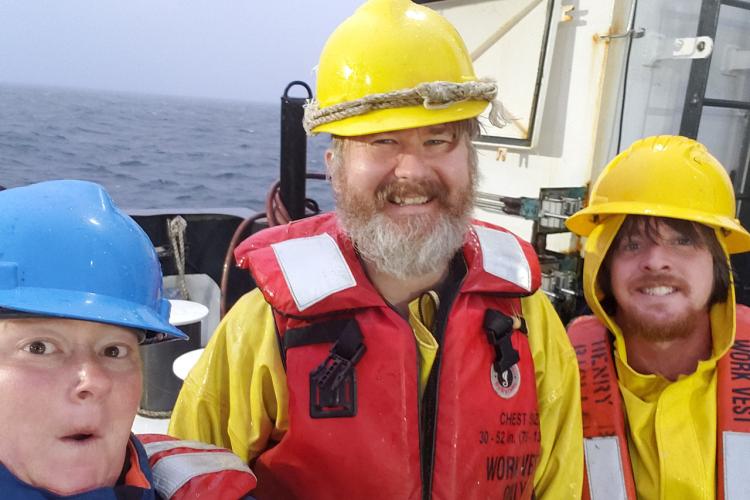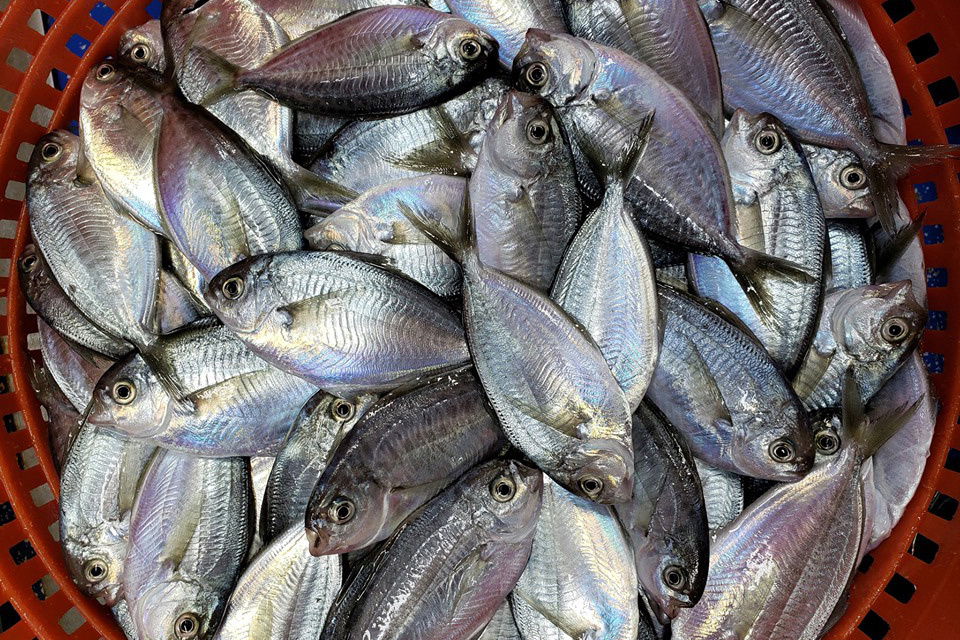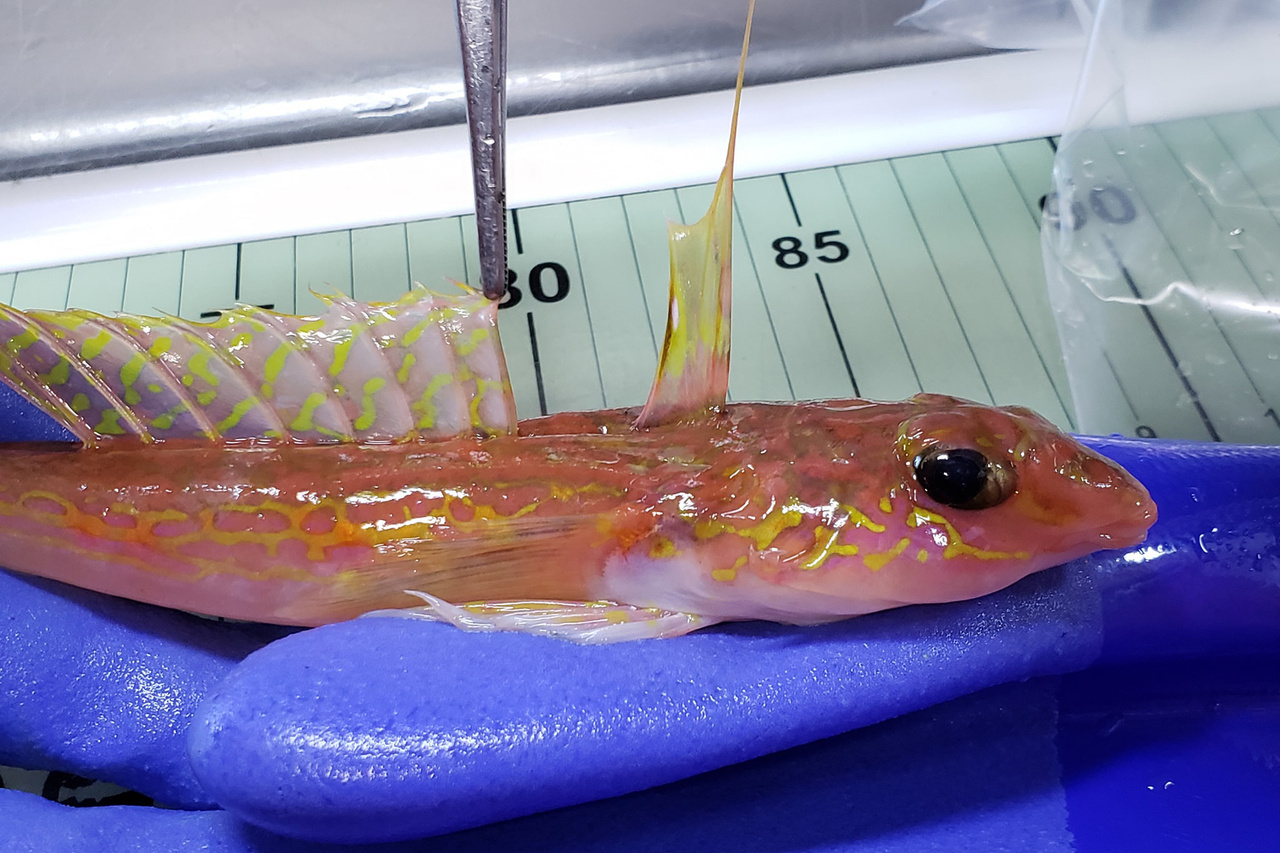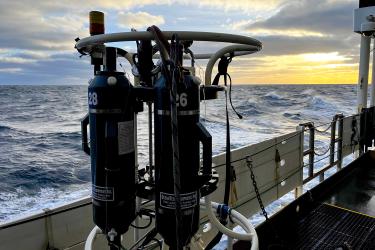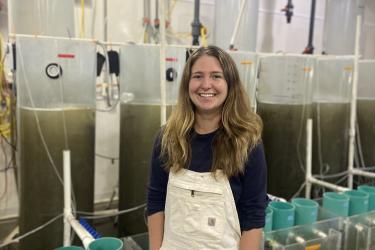This leg of the fall bottom-trawl survey is almost done! A little rain squall passed overhead in the beginning, but that didn’t slow down operations. The ship and science crew are so dedicated and hardworking that even rain blowing in sideways won’t dampen their spirits. So far, sampling on this leg has been a mix of inshore and offshore stations from Block Island, Rhode Island to the Hudson Canyon, a large submarine canyon on the Northeast Continental Shelf that's more than 10,000 feet deep in places. Just another day on the bottom-trawl survey!
![Silvery bluefish ready for sampling]()
Bluefish, Pomatomus saltatrix. Photo: NOAA Fisheries
It’s always neat to see lots of silver-colored fish come down the sorting belt. Bluefish is one of those. An aggressive sport fish that’s fun to catch and eat.
![Slightly flat and oblong silver butterfish in a basket]()
Butterfish, Peprilus triacanthus. Photo: NOAA Fisheries
Another silver shiner, the butterfish, Peprilus triacanthus. It's fast growing and though small, quite tasty.
![A slender pink fish with spiky yellow fins along its back held in a sampler's gloved hand]()
A dragonet. Photo: NOAA Fisheries
We caught this dragonet at a deep offshore station. The striking pink color and bright yellow designs covering the body and fins make this fish easy to recognize.
![A round bodied, brown-speckled white octopus with a fan-shaped egg casing]()
Paper nautilus octopus. Photo: NOAA Fisheries
The paper nautilus is an unusual octopus that's also called an argonaut. That fan-shaped thing looks like a shell, but it’s actually a very thin egg case that acts as a brood chamber and helps this animal maintain buoyancy. Paper nautiluses drift in the open ocean rather than crawling on the ocean floor like most other octopuses. Despite their differences with other octopus species, argonauts catch prey with their tentacles, move with jet propulsion, and eject ink when threatened.

